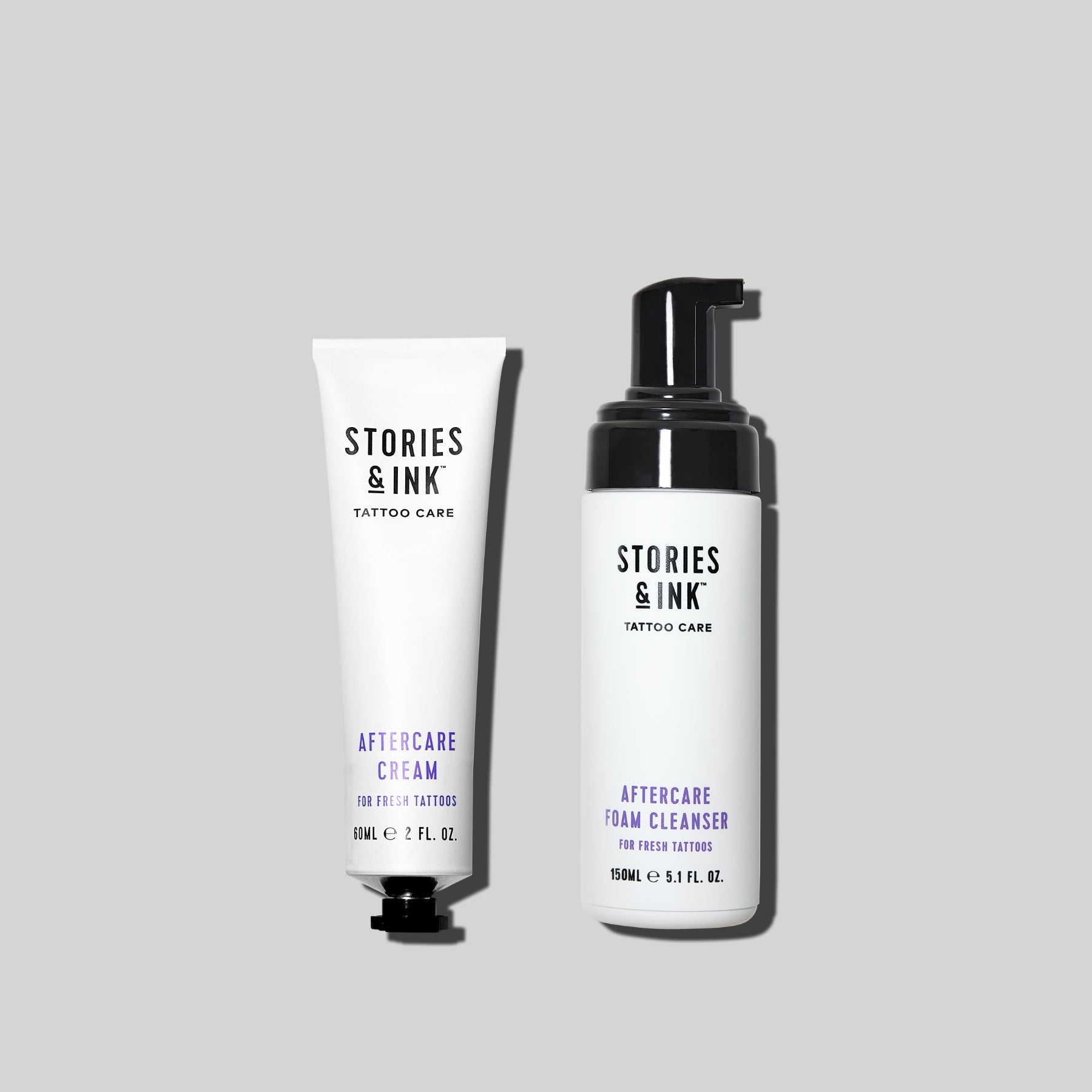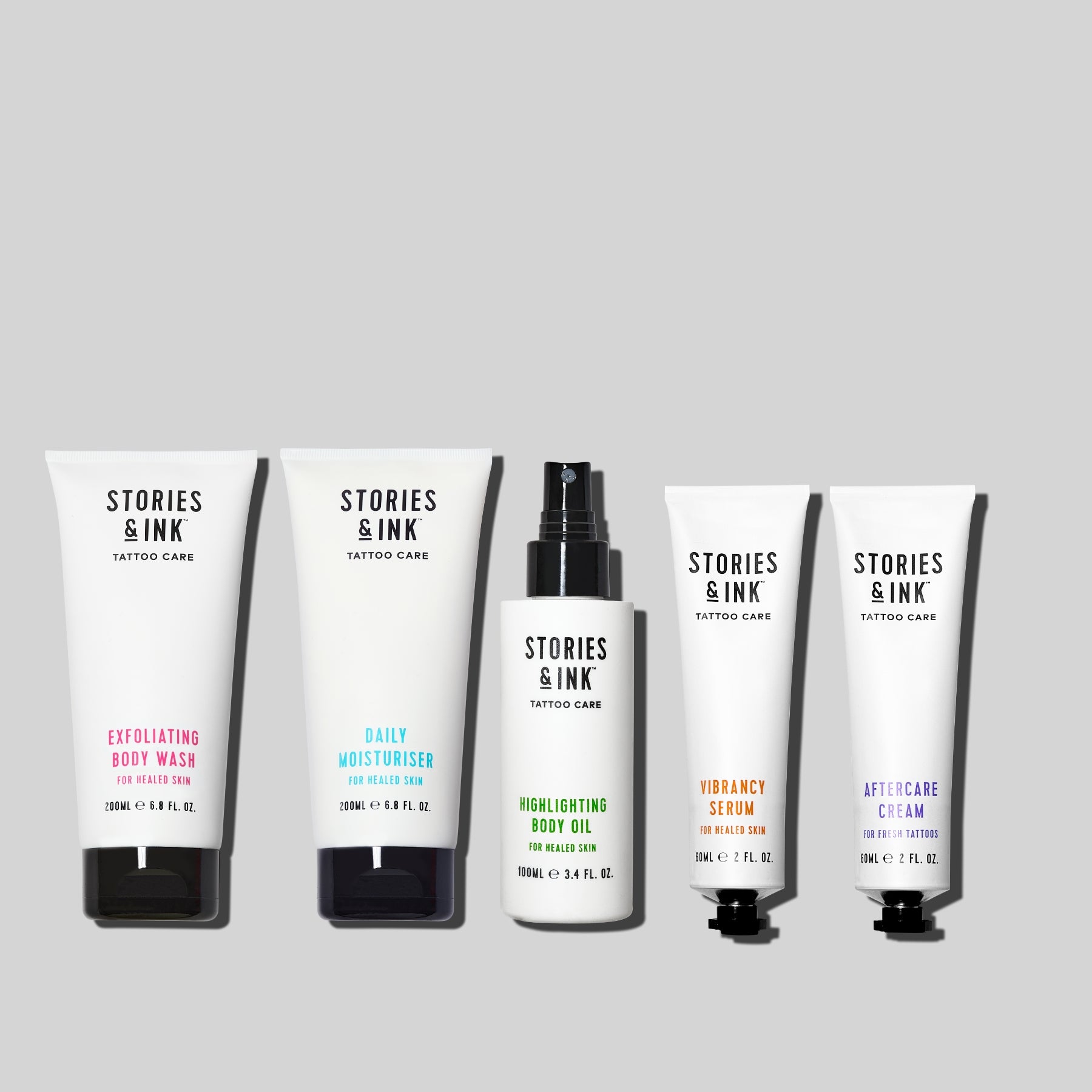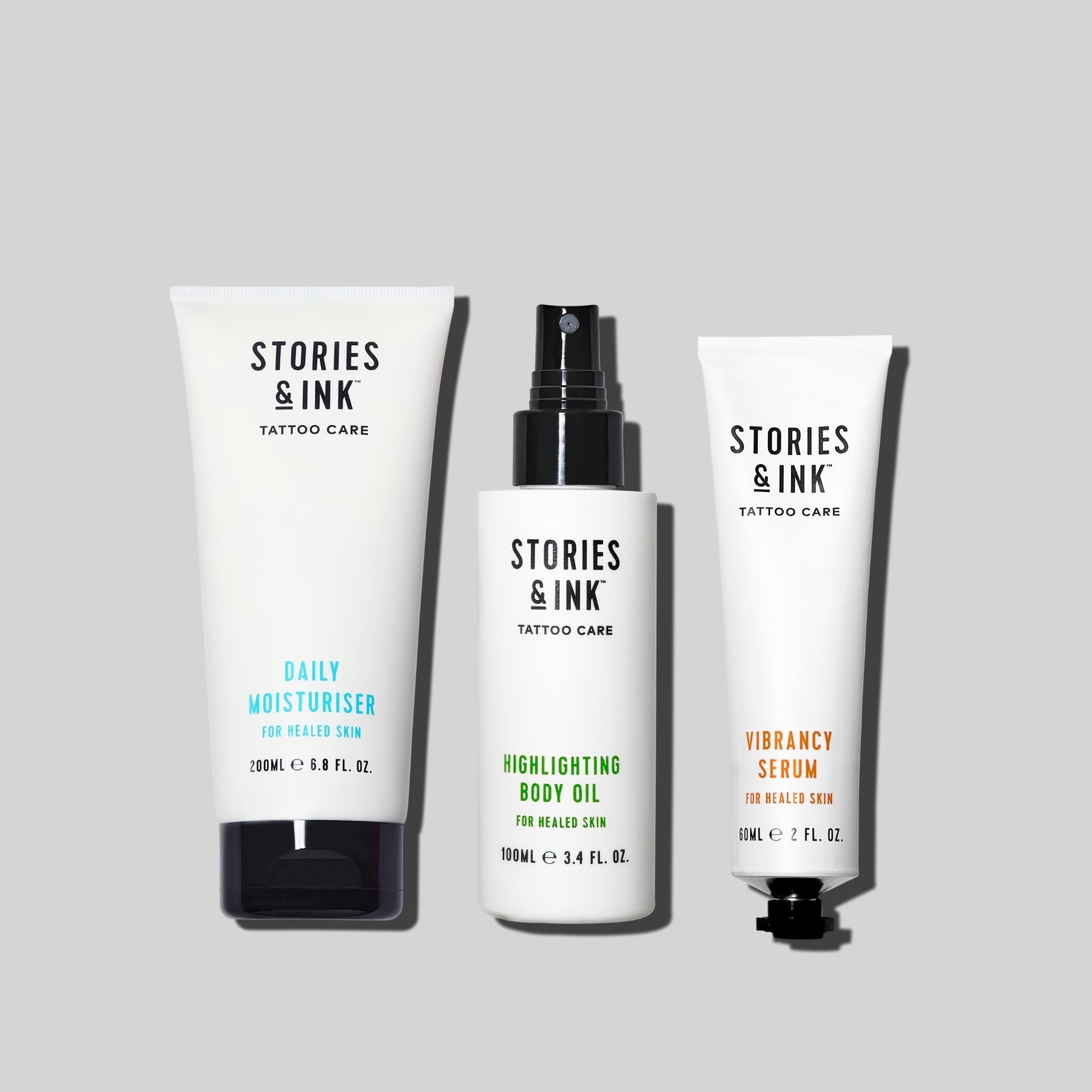We chatted to tattoo artists Will Koffman (@will_koffman_tattoo) from LA County and David Handsmark (@handsmark) from Helsinki to find out more about blackout tattoos and adding white ink over the top.
Blacked out or blackout, whatever you call them, these tattoos make a bold statement. Whether you love them or loathe them, this controversial tattooing style is becoming super popular among tattoo collectors. As is layering white ink on top in floral, geometric and other designs or leaving blank spaces of skin to create the tattoo design amongst the black ink.
What is a blackout tattoo?
Blackout tattoos consist of solid black ink. They’re usually done on a large scale; blackout tattoos typically cover a whole arm, leg or other areas of the body. No empty patches of skin can be seen in a blackout tattoo, the black ink is opaque. Bold and striking, blackout tattoos often feature shaped edges to finish the piece. These can be scalloped, straight, geometric shapes, abstract waves or brush strokes, to name a few.
Blackout tattoos aren’t always about how they look although this is important. They’re also an option for cover ups as tattoo artist Will explains. "It is not atypical for a blackout tattoo to be a large-scale cover up or have multiple cover ups," he says. "But in recent years it has become much more common for these tattoos to be an aesthetic choice."
 Tattoo by Will Koffman
Tattoo by Will Koffman
Can you tattoo white ink on a black tattoo?
Yes, once the foundation of the black ink is tattooed and healed, white ink can be added. Tattoo artist David explains why white on black is a good idea.
"White on black allows you to start from zero with almost any cover up and create a brand new work, way better and last longer, if done with the right technique without having to go through that laser process," he says. "Every case is a bit different, but the priority is to hide the skin in the fewest sessions possible while upholding the quality."
There’s a couple of ways you can do these tattoos: black out then add white and black ink; blastover a new design on top of an old tattoo and then tattoo white on top of the empty spaces; black out around existing tattoos; or black out and leave blank space to create the new design.
David recommends following the advice of the artist about what process works best is the key. "Researching the right artist specialised in it and with a few years experience will definitely give you the best result," he adds.
 Tattoo by David Handsmark
Tattoo by David Handsmark
Are they safe?
Blackout tattoos need a lot of ink to create the look, adding white on top only increases the amount of ink you need. With this in mind you might wonder if this style of tattooing is safe?
"There are some poor quality inks on the market that are made with materials that you wouldn’t want built up in the body," explains Will. "But that isn't what you would expect to be used by responsible tattoo artists."
 Tattoo by David Handsmark
Tattoo by David Handsmark
Before getting a white on blackout tattoo, here are 5 things to think about:
1. Make sure you really want it
Unlike other tattoos, blackout and white tattoos aren’t something you can get on a whim. They’re a big commitment when it comes to space on your body, your time and money.
"As with any tattoo, getting solid blackwork is a serious decision and should take a bit of consideration," says Will. "It's not like a tattoo of a name or date or symbol which can be relatively easily covered or lasered off. These are often impossible to fully remove or cover up."
2. Choose your tattoo artist wisely
David Hands suggests "doing proper research on Instagram around artists that are specialised in white on black and contact your preferred artist/s to get more info about your specific case."
3. Consider your tolerance for pain
The level of pain depends on "how many hours the session lasts, the area you’re tattooing, the tolerance of the person and the ability of the person to not focus on the pain," David says. "Tattooing on top of an old tattoo can add some extra pain."
4. Think about the time commitment
These tattoos can take a long time as you’re packing a lot of colour and ink into the skin. "Typically the process is over 2 to 3 sessions," Will says. "When opening up a large area of skin, it can be difficult on a client, both for the tattooing process and the healing, to attempt to saturate too large of an area at a time. Cover up tattoos, especially of bright colours, can actually require the most work as the existing tones tend to blend in the skin."
5. Choose your aesthetic
"When getting white over black, just be aware that the tattoo will not be as bright as if it were over fresh skin," Will adds. "[White ink on black tattoos] tend to hold together much better over time when the artwork is pretty bold and graphic. If it fits my client's aesthetic, my best recommendation is to tattoo a linear drawing in white ink."
 Tattoo by Will Koffman
Tattoo by Will Koffman
How to care for your healed blackout tattoo
"Healing heavy blackout or blackwork tattooing is essentially similar to healing any large colour tattoo," Will says. "[You may] feel some fatigue or sensitivity over the area for a number of days, but that will be the worst of it."
When healing your tattoo you should follow the aftercare advice given to you by your tattooist. Firstly you’ll want to make sure your tattoo is fully healed before you swap your aftercare cream for a daily moisturiser. You can also exfoliate healed skin to help your tattoos stay bright. Find out more about exfoliation and tattoos here.





